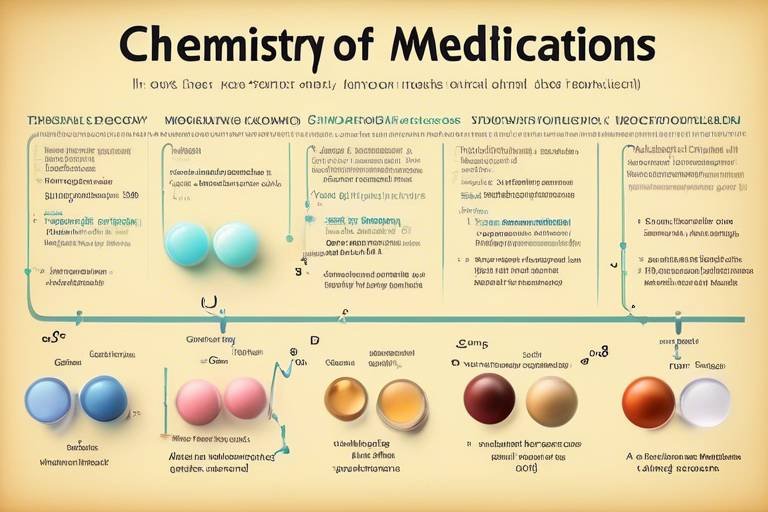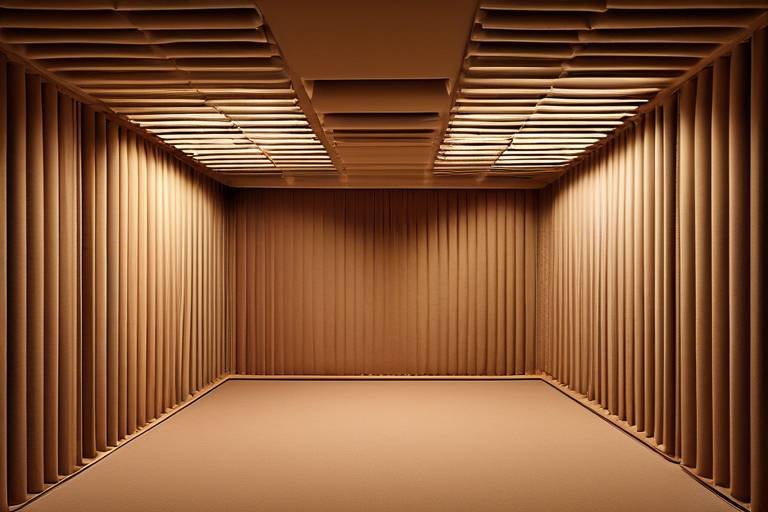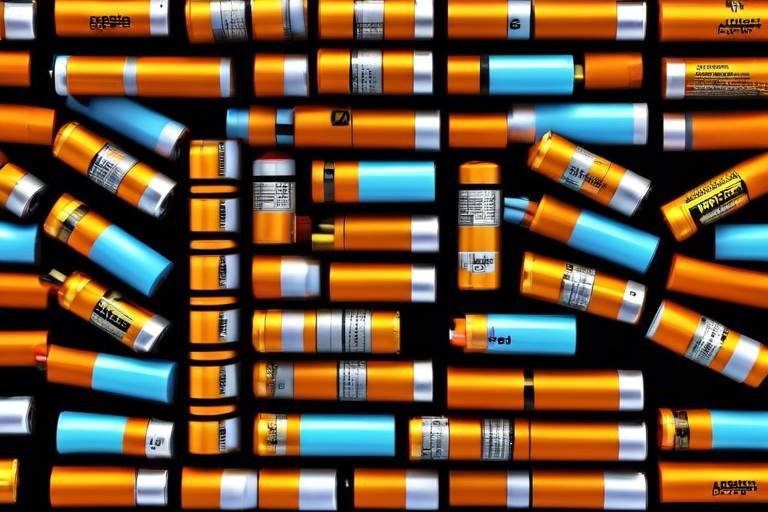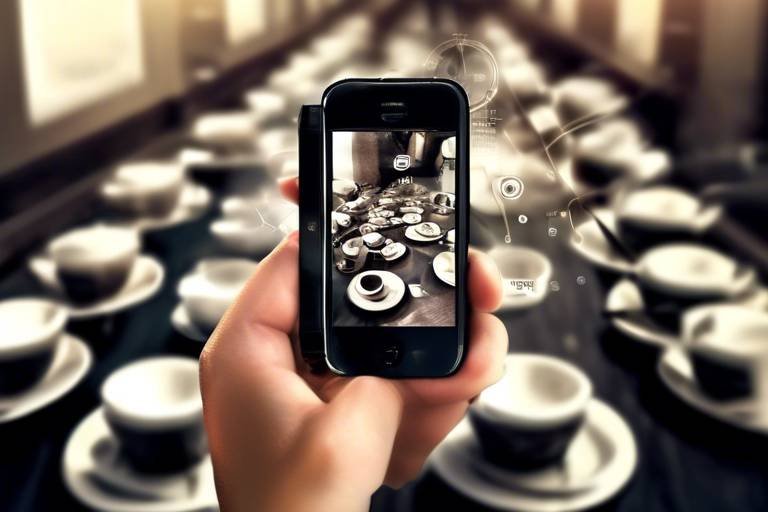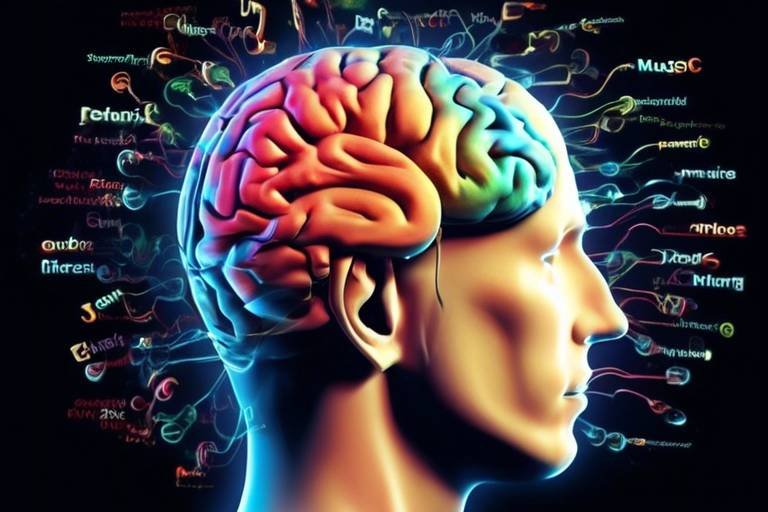The Physics of Jet Lag - How to Overcome It
Traveling across time zones can feel like stepping into a different world, but the reality is that your body is still trying to adjust to its old routine. This phenomenon, known as jet lag, can leave even the most seasoned travelers feeling disoriented and drained. So, what exactly causes this disruption? At its core, jet lag occurs when your body's internal clock, or circadian rhythm, is out of sync with the local time of your destination. Imagine your internal clock as a finely tuned orchestra, and when you travel, it’s as if someone has suddenly changed the tempo. The result? A cacophony of symptoms that can include fatigue, irritability, and even digestive issues. In this article, we will explore the scientific principles behind jet lag, its effects on the body, and practical strategies to mitigate its impact, ensuring that your next journey is as smooth as possible.
Jet lag is more than just a fleeting feeling of tiredness; it's a complex physiological response. When you fly across multiple time zones, your body struggles to adjust to the new schedule. This misalignment can lead to a variety of symptoms that can last for several days. The primary culprit? The body's internal clock, which dictates when we feel alert and when we feel sleepy. This clock is influenced by environmental cues, especially light. When you suddenly change time zones, your clock remains set to your original time, creating a disconnect between your biological rhythms and the external world. Typical symptoms of jet lag include:
- Fatigue: Feeling unusually tired or lethargic.
- Insomnia: Difficulty falling or staying asleep.
- Digestive Issues: Upset stomach or irregular bowel movements.
- Difficulty Concentrating: Trouble focusing or feeling mentally foggy.
Circadian rhythms are the body's natural cycles that regulate sleep-wake patterns and other bodily functions. These rhythms are influenced by external factors such as light, temperature, and social activities. When we travel, especially across several time zones, our circadian rhythms can become disrupted, leading to the symptoms we associate with jet lag. Think of it as trying to tune a guitar while it's being played; it simply doesn't work well. Maintaining a stable internal clock is crucial for overall health and well-being. To help your body adjust, it’s essential to understand how light exposure affects these rhythms.
Light is one of the most significant factors in regulating our circadian rhythms. When we are exposed to natural light, it signals to our brain that it's time to be awake and alert. Conversely, darkness signals that it’s time to wind down and prepare for sleep. If you’ve ever noticed how a bright sunny day can lift your spirits, you’re experiencing the powerful effects of light on your body. To alleviate the symptoms of jet lag, consider the following:
- Seek natural light upon arrival at your destination.
- Avoid bright screens before bedtime to promote better sleep.
- Consider using light therapy devices if natural light is unavailable.
The timing of light exposure is critical in adjusting your circadian rhythms. Morning light helps advance your internal clock, making it easier to wake up earlier, while evening light can delay your clock, making it more challenging to fall asleep. If you’re traveling east, aim for morning light to help you adjust. If you’re heading west, evening light can help you stay awake longer. It’s all about finding the right balance for your body’s needs.
For those times when natural light isn’t an option, artificial lighting can be a game-changer. There are various lighting techniques that can help alleviate jet lag symptoms effectively. Consider using:
- Bright white light: Mimics natural sunlight and can be used in the morning or evening depending on your travel direction.
- Blue light: Particularly effective in the morning to help you wake up and feel alert.
- Dim red light: Ideal for evening use as it doesn’t interfere with melatonin production.
Implementing effective sleep strategies before, during, and after travel can significantly reduce jet lag. Here are some practical tips to optimize your sleep quality:
- Adjust your sleep schedule: Gradually shift your bedtime and wake time to match your destination's time zone a few days before you leave.
- Stay active: Light exercise can help you feel more awake during the day and promote better sleep at night.
- Create a sleep-friendly environment: Use earplugs, eye masks, and comfortable bedding to enhance your sleep quality.
Your diet and hydration levels play a significant role in how your body copes with jet lag. Eating the right foods and staying hydrated can help you recover faster and feel more energized. For instance, foods rich in tryptophan, such as turkey and bananas, can promote better sleep. On the other hand, heavy meals can disrupt your sleep patterns, so aim for light, nutritious snacks instead.
Some foods can help you feel more energized and less affected by jet lag. Incorporate the following into your diet:
- Complex carbohydrates: Whole grains can help increase serotonin levels, promoting relaxation.
- Lean proteins: Chicken, fish, and legumes provide essential amino acids that support sleep.
- Fruits and vegetables: Rich in vitamins and minerals, they help maintain overall health.
Dehydration can exacerbate the symptoms of jet lag, leading to increased fatigue and irritability. It’s essential to stay properly hydrated before, during, and after your flight. Here are some tips to maintain fluid balance:
- Drink water regularly throughout your journey.
- Avoid excessive caffeine and alcohol, as they can dehydrate you.
- Opt for hydrating foods, like fruits and soups, to help maintain hydration levels.
Q: How long does jet lag typically last?
A: The duration of jet lag varies from person to person, but it generally lasts about one day for each time zone crossed.
Q: Can I prevent jet lag entirely?
A: While it may not be possible to completely avoid jet lag, you can minimize its effects by adjusting your schedule, staying hydrated, and using light exposure effectively.
Q: Are there any medications to help with jet lag?
A: Some travelers find that melatonin supplements can help regulate their sleep patterns, but it’s best to consult with a healthcare professional before trying any new medication.

Understanding Jet Lag
Jet lag is more than just a pesky inconvenience for travelers; it’s a complex physiological phenomenon that occurs when your body’s internal clock, also known as the circadian rhythm, is thrown out of sync with the local time at your destination. Imagine your body as a finely tuned instrument, and suddenly, it’s playing out of tune because you’ve crossed multiple time zones. This disorientation can lead to a myriad of symptoms that can leave you feeling like a zombie on your vacation or business trip.
When you travel across several time zones, especially when flying east or west, your body struggles to adjust to the new schedule. The symptoms of jet lag can include fatigue, difficulty concentrating, irritability, and even digestive issues. It’s like your body is stuck in a time warp, trying to catch up with a clock that’s ticking at a different pace. The most common symptoms can be categorized as follows:
- Physical Symptoms: Fatigue, headaches, and muscle soreness.
- Cognitive Symptoms: Difficulty focusing, impaired memory, and decreased alertness.
- Emotional Symptoms: Mood swings, irritability, and anxiety.
But what exactly causes these symptoms? The root of the issue lies in the disruption of the circadian rhythms, which are biological processes that follow a roughly 24-hour cycle. These rhythms regulate various bodily functions, including sleep-wake cycles, hormone release, and even body temperature. When you abruptly change your environment, your internal clock struggles to keep up, leading to a mismatch between your body’s natural rhythms and the external world.
To better understand jet lag, let’s break down the physiological mechanisms at play. The suprachiasmatic nucleus (SCN), a small group of cells in the hypothalamus, acts as the master clock of the body. It responds to light signals, helping to regulate sleep patterns. When you travel, especially to a place with a significant time difference, the SCN receives conflicting signals, which can lead to a temporary state of confusion in your body’s systems.
Additionally, the production of melatonin, the hormone that promotes sleep, is also affected. When you’re in a new time zone, your body may not produce melatonin at the right times, making it harder to fall asleep or stay awake when you need to. This results in what many travelers experience as "jet lag," a feeling of being out of sync with the local time.
In summary, understanding jet lag requires recognizing the intricate dance between your internal clock and the external environment. By grasping how circadian rhythms and hormonal changes contribute to the sensation of jet lag, you can better prepare yourself for the challenges of crossing time zones. Armed with this knowledge, you can take proactive steps to mitigate the effects and enjoy your travels to the fullest!

The Role of Circadian Rhythms
Circadian rhythms are like the body's internal clock, ticking away to keep our biological processes in sync with the 24-hour day. Imagine a finely tuned orchestra, where each instrument plays its part to create a harmonious symphony. In this case, the instruments are our hormones, sleep patterns, and even our metabolism, all working together to ensure we function optimally. When we travel across time zones, this orchestra can become a bit chaotic, leading to the dreaded phenomenon known as jet lag.
But what exactly causes this disarray? When we shift our location, our body’s natural rhythm, which is primarily influenced by light and darkness, gets thrown off balance. The primary driver of these rhythms is the suprachiasmatic nucleus (SCN), a tiny region in the brain that responds to light signals. When you suddenly find yourself in a new time zone, your SCN struggles to adjust, causing a mismatch between your internal clock and the external environment. This misalignment can lead to a host of symptoms, including fatigue, irritability, and difficulty concentrating.
To better understand how these rhythms work, let’s break down the components that influence them. The core elements include:
- Light Exposure: The most significant factor in regulating our circadian rhythms is light. Natural sunlight helps tell our bodies when to be awake and when to rest.
- Melatonin Production: This hormone plays a crucial role in sleep regulation. It’s produced in response to darkness and helps signal our body that it’s time to sleep.
- Environmental Cues: Other factors such as temperature, social interactions, and even meal times can influence our internal clock.
The synchronization of these rhythms is essential for maintaining good health. When disrupted, as often happens during long flights or rapid time zone changes, it can lead to a cascade of negative effects on our physical and mental well-being. Think of it as trying to drive a car with a misaligned steering wheel; it’s challenging and can lead to accidents along the way.
So, how can we keep our internal clocks ticking smoothly, even when we’re globe-trotting? The key lies in understanding our body’s natural tendencies and working with them rather than against them. By gradually adjusting our sleep schedules before a trip, strategically using light exposure, and being mindful of our eating habits, we can help our bodies adapt more easily to new time zones.
In essence, the role of circadian rhythms in our lives is profound. They govern not just our sleep but also our overall health and vitality. By respecting these rhythms and learning how to manage them, we can significantly reduce the impact of jet lag, making our travel experiences more enjoyable and less taxing on our bodies.

Light Exposure and Its Effects
When it comes to overcoming jet lag, light exposure is one of the most powerful tools in your arsenal. Think of your body as a finely tuned instrument, where light acts as the conductor, guiding your internal clock to play in harmony with the world around you. Our bodies are wired to respond to natural light, which helps regulate our circadian rhythms—those internal cycles that dictate when we feel awake, sleepy, and everything in between. When you suddenly change time zones, your body can feel like it’s trying to play a symphony without a conductor, resulting in disarray and fatigue.
Natural sunlight is particularly effective in resetting your internal clock. When you expose yourself to light, especially in the morning, it signals to your brain that it’s time to be alert and active. Conversely, avoiding light in the evening can help your body wind down and prepare for sleep. This is why many travelers who land in a new time zone often struggle to adapt; they may not be getting the right type of light exposure at the right times. The key is to strategically plan your light exposure based on your destination's time zone.
In fact, studies have shown that the timing of light exposure can significantly impact how quickly you adjust to a new time zone. For instance, if you’re traveling east, getting morning light can help advance your internal clock, while evening light can help delay it when traveling west. To illustrate this concept, consider the following table:
| Direction of Travel | Best Time for Light Exposure | Goal |
|---|---|---|
| East | Morning | Advance internal clock |
| West | Evening | Delay internal clock |
But what if you’re in a situation where natural light is scarce? Don’t worry! There are artificial light solutions that can mimic the effects of sunlight. Bright light therapy lamps, for example, can be used to expose yourself to the right wavelengths of light, helping to reset your circadian rhythms even when you're indoors. This can be particularly useful during long flights or in places with limited sunlight exposure.
In summary, light exposure plays a crucial role in managing jet lag. By understanding how to use light strategically—whether it’s basking in the morning sun or utilizing artificial light—you can significantly ease the transition to a new time zone. So, the next time you find yourself battling the effects of jet lag, remember to embrace the power of light!
- How long does it take to adjust to a new time zone?
Adjusting to a new time zone can take anywhere from a few days to a week, depending on the number of time zones crossed and individual differences. - Can I use blue light glasses to help with jet lag?
Yes, blue light glasses can help filter out artificial light that might interfere with your sleep, especially if you’re exposed to screens before bedtime. - What is the best way to prepare for a long flight?
To prepare for a long flight, gradually adjust your sleep schedule to align with your destination, stay hydrated, and consider using light exposure strategies.

Morning vs. Evening Light
When it comes to adjusting our internal clocks, the timing of light exposure can be as crucial as the light itself. Think of your body as a finely tuned instrument; just like a piano needs to be played at the right time to create beautiful music, our circadian rhythms require the right light at the right moments to function optimally. Morning light serves as a powerful cue for our bodies to wake up and start the day. It stimulates the production of serotonin, a hormone that elevates mood and promotes alertness. Exposure to natural light in the morning can help reset your internal clock, making it easier to adjust to a new time zone.
On the flip side, evening light plays a different role. When we expose ourselves to bright lights in the evening, especially blue light from screens, we send signals to our brains that it’s still daytime. This can interfere with the production of melatonin, the hormone responsible for sleep. So, if you’re trying to adjust to a new time zone, basking in the evening light can keep you awake when your body is actually craving rest.
To illustrate this further, consider the following table that summarizes the effects of morning and evening light:
| Type of Light | Effects on Circadian Rhythm | Best Time for Exposure |
|---|---|---|
| Morning Light | Enhances alertness and resets the internal clock | Shortly after waking up |
| Evening Light | Inhibits melatonin production, delaying sleep onset | Before bedtime |
In practical terms, if you’re traveling east, it’s beneficial to seek out morning light upon arrival. This can help you adjust more quickly to the new time zone. Conversely, if you’re traveling west, limiting your exposure to evening light can help you fall asleep earlier, aligning your body with the local time. It’s all about understanding your body’s needs and using light strategically to harmonize your internal rhythms.
In conclusion, the battle against jet lag can be significantly influenced by how we manage our exposure to light. By embracing the power of morning light and being cautious with evening exposure, travelers can set themselves up for a smoother transition across time zones. So, the next time you're jetting off, remember: the right light at the right time can make all the difference!
- What is jet lag? Jet lag is a temporary sleep disorder that occurs when your body's internal clock is out of sync with the new time zone you are in.
- How long does jet lag last? The duration of jet lag can vary, but it typically lasts a few days. The severity often depends on the number of time zones crossed.
- Can I prevent jet lag? Yes, you can minimize jet lag by adjusting your sleep schedule before your trip, staying hydrated, and managing your exposure to light.
- Is it better to sleep on the plane? It can be beneficial to sleep on the plane, especially if you are traveling overnight, but try to align your sleep with your destination's time zone.
- What foods can help with jet lag? Foods rich in melatonin, such as cherries and bananas, as well as those high in protein, can help regulate sleep and energy levels.

Artificial Light Solutions
When natural light is out of reach, especially during long flights or in unfamiliar time zones, become a vital tool in the battle against jet lag. Imagine your body as a finely tuned orchestra, where each instrument must play in harmony with the others. When you travel across time zones, this harmony can be disrupted, leading to a cacophony of symptoms like fatigue, irritability, and confusion. By utilizing artificial light effectively, you can help reset your internal clock and restore that sweet symphony.
One of the most effective methods is the use of light therapy lamps. These lamps emit bright light that mimics natural sunlight, which can be particularly helpful when you need to adjust your circadian rhythm quickly. For example, if you arrive at your destination in the morning but feel like it's the middle of the night, exposing yourself to a light therapy lamp for about 20 to 30 minutes can signal to your brain that it’s time to wake up and be alert.
Another option is to use smart lighting systems that can be programmed to change intensity and color temperature throughout the day. These systems can gradually shift from warm, soft light in the morning to bright, cooler light during the day, and then back to warm light in the evening. This mimics the natural progression of sunlight and can significantly aid in adjusting your body’s internal clock. Consider how a sunrise gradually brightens the sky; this gentle transition can be replicated indoors to help you adapt more comfortably.
Moreover, it’s essential to consider the timing of your light exposure. For instance, if you’re traveling east, you’ll want to expose yourself to bright light in the morning to advance your circadian rhythm. Conversely, if you’re heading west, evening light exposure can help delay your internal clock. This is akin to setting a timer on your phone; you need to adjust the settings according to your destination’s time zone to ensure you wake up refreshed and ready to explore.
For those who might find themselves in a situation where they cannot access specialized lighting, even simple solutions like LED bulbs that mimic daylight can be beneficial. These bulbs can be used in your hotel room to create a more conducive sleeping environment. You could also consider using apps that adjust your device's screen brightness and color temperature to reduce blue light exposure, especially before bedtime, which can help signal your body that it's time to wind down.
In summary, while natural light is the gold standard for regulating your circadian rhythms, artificial light solutions can serve as a powerful ally in the fight against jet lag. By strategically using light therapy lamps, smart lighting systems, and even simple LED bulbs, you can dramatically improve your ability to adjust to new time zones. Just remember, the key to success is timing and consistency—like tuning your instrument before a performance, you must give your body the right signals at the right times to ensure a harmonious transition.
- What is light therapy? Light therapy involves exposure to artificial light, usually from a specialized lamp, to help regulate sleep patterns and circadian rhythms.
- How long should I use a light therapy lamp? It is generally recommended to use a light therapy lamp for 20 to 30 minutes, preferably in the morning after arriving at your destination.
- Can I use regular light bulbs instead of a light therapy lamp? While regular light bulbs can help, light therapy lamps are specifically designed to provide the intensity and spectrum of light needed for effective results.
- What is the best time to use artificial light when traveling? If traveling east, use morning light; if traveling west, use evening light to help adjust your internal clock effectively.

Sleep Strategies for Travelers
Traveling across multiple time zones can feel like stepping into a time warp, leaving your body and mind in a state of disarray. To combat this disorientation, implementing effective sleep strategies is crucial. Think of your body as a finely tuned instrument; if you don't take care of it, it won't perform at its best. Here are some practical tips to help you optimize your sleep quality while on the move.
First and foremost, consider your sleep schedule before you even board the plane. Gradually adjust your bedtime to align more closely with the destination's time zone a few days prior to your departure. This gentle transition can help your body acclimate more easily. For instance, if you’re flying east and need to wake up earlier, try going to bed 30 minutes earlier each night. This method acts like a warm-up before the big game, preparing your body for the challenges ahead.
When it comes to the actual flight, creating a comfortable sleeping environment is essential. Noise-canceling headphones or earplugs can help drown out the hum of the airplane, while a sleep mask can block out harsh cabin lights. Additionally, consider bringing a travel pillow to support your neck. These little comforts can make a world of difference and transform your cramped seat into a cozy nook. Remember, just because you're flying doesn't mean you have to sacrifice comfort!
Another key strategy is to stay active during the flight. This might sound counterintuitive when you're trying to catch some Z's, but engaging in light stretches or short walks up and down the aisle can improve your circulation and help you feel less sluggish. Think of it as giving your body a little pep talk—reminding it that it’s still alive and kicking, even at 30,000 feet!
Once you arrive at your destination, resist the urge to nap for extended periods. While a quick power nap can be refreshing, long naps can throw your internal clock further out of sync. Instead, aim to stay awake until a reasonable local bedtime. This will help reset your circadian rhythm more effectively. If you absolutely must nap, limit it to 20-30 minutes to avoid entering deeper sleep cycles that can leave you feeling groggy.
Lastly, consider incorporating relaxation techniques into your routine. Deep breathing exercises, meditation, or even light reading can help calm your mind and prepare you for sleep. Creating a pre-sleep ritual can signal to your body that it’s time to wind down, much like how a warm bath can signal the end of the day. This can be particularly helpful when adjusting to a new environment.
In summary, conquering jet lag is all about being proactive and mindful of your sleep habits. By adjusting your sleep schedule, creating a comfortable sleep environment, staying active, managing naps, and incorporating relaxation techniques, you can significantly enhance your travel experience. Remember, a well-rested traveler is a happy traveler!
- How long does it take to adjust to a new time zone? It typically takes about one day for each time zone crossed, but this can vary based on the individual.
- What are the best foods to eat to help with jet lag? Foods rich in melatonin, such as cherries, bananas, and oats, can promote better sleep.
- Is it better to sleep on the plane or wait until I arrive? It depends on your flight schedule; short naps can be beneficial, but try to align your sleep with the local time as soon as possible.

Nutrition and Hydration
When we talk about overcoming jet lag, nutrition and hydration are often overlooked but play a crucial role in how quickly we bounce back after crossing time zones. Just like a car needs fuel to run smoothly, our bodies require the right nutrients and hydration to function optimally, especially during travel. Have you ever noticed how you feel sluggish and out of sorts after a long flight? That's your body screaming for the right kind of care!
First off, let’s dive into the importance of nutrition. Consuming the right foods before, during, and after your travels can make a world of difference. Foods rich in complex carbohydrates, such as whole grains, can help stabilize your blood sugar levels, providing you with sustained energy. Pairing these with lean proteins like chicken or fish can enhance your overall mood and cognitive function. And let’s not forget about fruits and vegetables! They are packed with vitamins and minerals that support your immune system, which can take a hit when you're traveling.
Here’s a quick look at some foods that can be your best friends while traveling:
- Bananas: Rich in potassium, they help regulate your sleep cycle.
- Oatmeal: A warm bowl can be soothing and helps to keep you full.
- Salmon: Loaded with omega-3 fatty acids, it’s great for brain health.
- Nuts: A handful can provide a quick energy boost and keep your hunger at bay.
Now, let’s talk about hydration. It’s often said that water is life, and this is especially true when you’re flying. The cabin pressure in airplanes can lead to dehydration, making you feel even more fatigued. It’s essential to drink plenty of fluids, preferably water, before, during, and after your flight. Aim for at least 8-10 glasses of water a day, and consider incorporating hydrating foods like cucumbers, oranges, and watermelon into your meals.
To help visualize the impact of hydration on your body, here’s a simple table:
| Hydration Level | Symptoms |
|---|---|
| Well-Hydrated | Clear skin, high energy, sharp focus |
| Slightly Dehydrated | Dry mouth, fatigue, headache |
| Severely Dehydrated | Dizziness, confusion, extreme fatigue |
In addition to water, consider herbal teas or electrolyte-infused drinks, especially if you notice signs of dehydration. These can help replenish lost minerals and keep your body balanced. Remember, your body is like a sponge; it absorbs everything, so choose wisely!
As you prepare for your next adventure, keep these nutrition and hydration tips in mind. They can significantly influence how quickly you adjust to new time zones and help you feel more vibrant and alert during your travels. After all, who wants to spend their vacation feeling like a zombie?
1. How much water should I drink while traveling?
Experts recommend drinking at least 8-10 glasses of water a day, especially during flights to combat dehydration.
2. What foods should I avoid to minimize jet lag?
Try to steer clear of heavy, greasy foods and excessive caffeine or alcohol, as they can disrupt your sleep patterns.
3. Can I use supplements to help with jet lag?
Some travelers find melatonin supplements helpful for regulating sleep cycles, but it's best to consult with a healthcare professional before trying any new supplement.
4. How long does it take to recover from jet lag?
Recovery time varies, but generally, you can expect to feel back to normal within a few days, depending on the number of time zones crossed.

Foods to Combat Jet Lag
When it comes to battling jet lag, your plate can be your best ally. The foods you consume play a significant role in how your body adapts to new time zones. Imagine your body as a finely tuned machine; just like a car requires the right fuel to run smoothly, your body needs the right nutrients to function optimally, especially during travel. So, what should you be eating to keep that pesky jet lag at bay?
First off, consider incorporating complex carbohydrates into your meals. Foods like whole grains, quinoa, and brown rice can boost serotonin levels, a neurotransmitter that helps regulate sleep. Think of serotonin as your body's natural sleep aid. Pair these carbs with lean proteins such as chicken, turkey, or fish, which are rich in tryptophan. This amino acid is essential for serotonin production and can help you drift off into a peaceful slumber.
Additionally, fruits and vegetables are your friends when it comes to fighting fatigue. Foods rich in antioxidants, like berries, spinach, and kale, can combat oxidative stress, which often increases during travel. Not only do they provide essential vitamins, but they also help in rejuvenating your body. For example, bananas are fantastic for replenishing potassium levels and can help you feel more energized. Their natural sugars provide a quick energy boost, making them a perfect snack while on the go.
Don't forget about hydration. Dehydration can exacerbate jet lag symptoms, making you feel more tired and disoriented. Drinking plenty of water is crucial, but you can also hydrate through foods. Cucumbers, watermelon, and oranges have high water content and can help keep you hydrated. As a bonus, they are refreshing and can be a delightful addition to your travel snacks.
Now, let’s talk about herbal teas and their soothing properties. Chamomile and valerian root teas can be particularly beneficial before bedtime, as they promote relaxation and can help you fall asleep faster. These teas are like a warm hug in a cup, easing the transition into sleep mode.
Here's a quick summary of foods to consider for combating jet lag:
| Food Type | Benefits |
|---|---|
| Complex Carbohydrates | Boost serotonin levels for better sleep |
| Lean Proteins | Rich in tryptophan, aiding sleep |
| Fruits and Vegetables | Provide antioxidants and hydration |
| Herbal Teas | Promote relaxation and better sleep |
In conclusion, being mindful of what you eat while traveling can significantly impact how you feel when you reach your destination. By choosing the right foods, you can help your body adjust more quickly and effectively to new time zones. Remember, your body is a temple, and treating it well with nutritious foods will help you conquer jet lag and enjoy your travels to the fullest!
- What should I eat before a long flight? Aim for a balanced meal with complex carbohydrates, lean protein, and plenty of fruits and vegetables.
- Can I drink coffee during my flight? While caffeine can provide a temporary energy boost, it's best to limit intake as it can disrupt sleep patterns.
- How much water should I drink while traveling? Aim for at least 8 ounces of water every hour to stay hydrated.

The Importance of Staying Hydrated
When it comes to combating jet lag, one of the most overlooked factors is hydration. You might not realize it, but the air inside airplanes is often extremely dry, which can lead to dehydration. This dehydration can exacerbate the symptoms of jet lag, making you feel more fatigued and disoriented than you would otherwise. Think of your body as a well-tuned machine; if it’s running low on fluids, it simply won’t function optimally. So, how can you ensure that you stay hydrated during your travels?
First off, it’s essential to start hydrating before you even board your flight. Drinking water in the days leading up to your trip can set a solid foundation for your body. Consider this: just like a plant that wilts without water, your body can become sluggish and unresponsive when dehydrated. Aim to drink at least 8-10 glasses of water daily, and increase this amount if you’re preparing for a long-haul flight.
During the flight, make it a habit to ask the flight attendants for water regularly. While many airlines offer complimentary beverages, it’s easy to forget to drink amidst the hustle and bustle of travel. Try to consume water every hour, even if you’re not feeling thirsty. To make it easier, you might want to keep a refillable water bottle handy. This not only helps you track your intake but also reduces plastic waste!
Additionally, it’s crucial to be mindful of what you eat and drink. While it may be tempting to indulge in caffeine-laden beverages or alcoholic drinks during your flight, these can contribute to dehydration. Instead, opt for nutritious snacks that provide hydration as well, such as:
- Fruits like watermelon, oranges, and cucumbers
- Nuts and seeds that are low in sodium
- Whole grain crackers with hummus
After your flight, continue to prioritize hydration. As you adjust to a new time zone, your body needs all the support it can get. Drinking water can help alleviate headaches, improve concentration, and enhance your overall mood. Consider setting reminders on your phone to drink water at regular intervals, especially if you’re busy exploring a new city.
In summary, staying hydrated is a vital component in fighting off the effects of jet lag. By making a conscious effort to drink water before, during, and after your travels, you can significantly improve your chances of a smoother transition across time zones. Remember, a hydrated traveler is a happy traveler!
- How much water should I drink while flying? Aim for at least 8-10 glasses a day, and try to drink water every hour during your flight.
- Can I drink coffee or alcohol during the flight? While it’s okay in moderation, both coffee and alcohol can lead to dehydration, so balance them with water.
- What are some hydrating snacks I can take on a flight? Fruits like watermelon and oranges, as well as whole grain snacks, are excellent choices!
Frequently Asked Questions
- What is jet lag and why does it happen?
Jet lag is that groggy feeling you get after traveling across multiple time zones. It happens because your body's internal clock, or circadian rhythm, gets thrown off balance. When you suddenly change time zones, your body struggles to adjust to the new sleep-wake schedule, leading to symptoms like fatigue, irritability, and difficulty concentrating.
- How can I minimize jet lag before my trip?
To minimize jet lag before your trip, try gradually adjusting your sleep schedule to match your destination's time zone. A few days before you leave, go to bed and wake up an hour earlier or later, depending on where you're headed. Also, stay well-hydrated and avoid heavy meals and alcohol, as these can disrupt your sleep quality.
- What role does light exposure play in overcoming jet lag?
Light exposure is crucial for resetting your internal clock. Natural sunlight helps signal your body when to be awake and when to sleep. If you're traveling east, seek morning light to help you adjust, while for westward travel, evening light is more beneficial. This helps your body align with the new time zone more quickly.
- Are there any specific foods that can help combat jet lag?
Absolutely! Foods rich in melatonin, like cherries, bananas, and oats, can promote better sleep. Additionally, incorporating protein-rich foods and complex carbohydrates can help maintain your energy levels. Eating balanced meals can make a big difference in how you feel during and after your flight.
- What hydration tips should I follow while traveling?
Staying hydrated is key to fighting off jet lag symptoms. Drink plenty of water before, during, and after your flight. Avoid excessive caffeine and alcohol, as they can dehydrate you. A good rule of thumb is to drink at least 8 ounces of water for every hour of your flight to keep your body well-hydrated.
- How long does it usually take to recover from jet lag?
The recovery time from jet lag can vary, but a general rule of thumb is that it takes about one day per time zone crossed to fully adjust. So if you travel across three time zones, you might feel off for three days. However, individual experiences can differ based on age, health, and travel habits.
- Can artificial light help if I can’t get natural light?
Yes! If natural light isn't an option, using artificial light can be beneficial. Bright light therapy lamps can help mimic sunlight and assist in resetting your circadian rhythm. Just be mindful of when you use them—morning light can help if you're adjusting to an earlier time zone, while evening light can help for later time zones.






